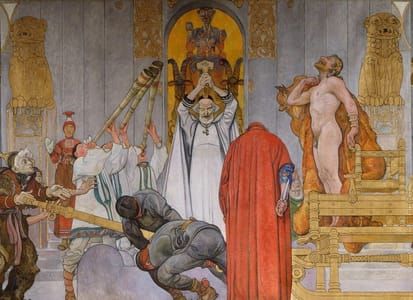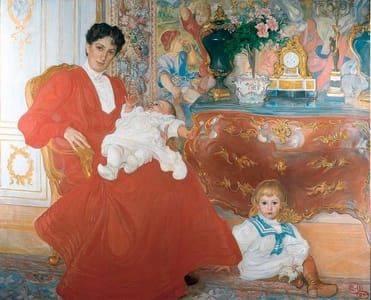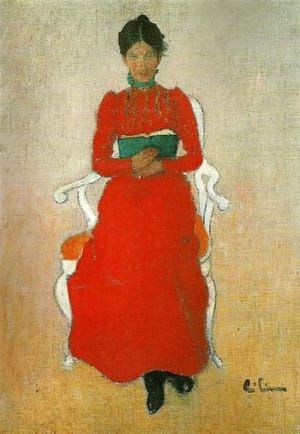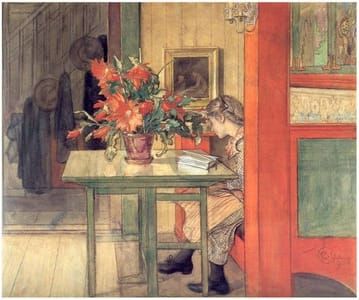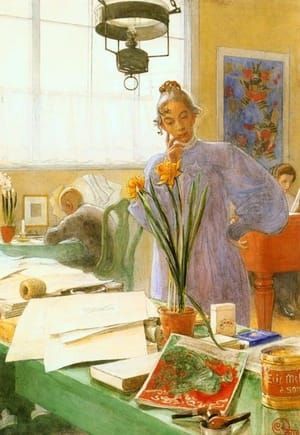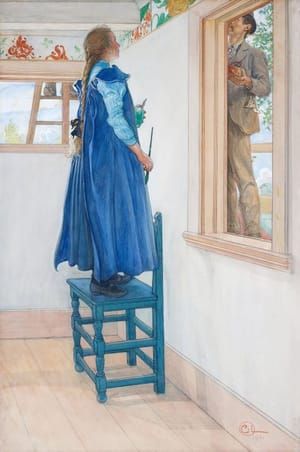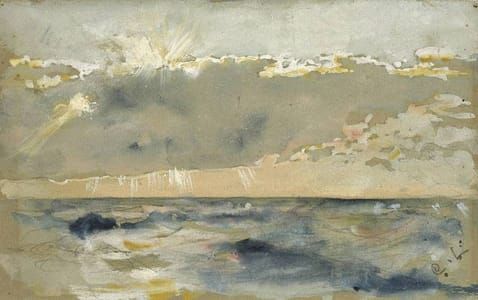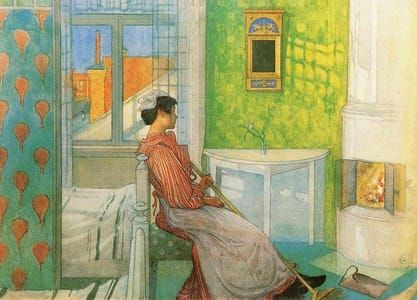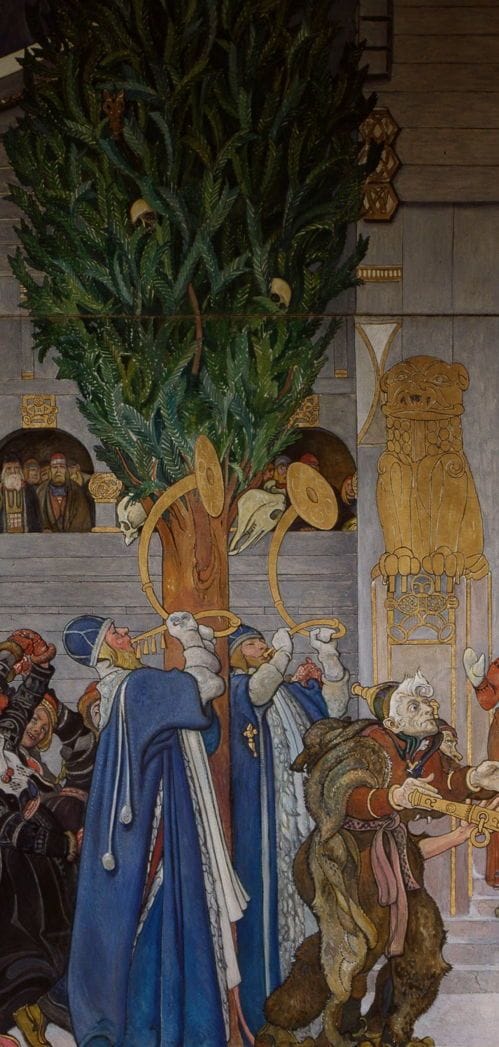

Midvinterblot (Midwinter Sacrifice),, 1915
Carl Larsson
Midvinterblot (Swedish for Midwinter's sacrifice) is a painting created for the hall of the central staircase in Nationalmuseum in Stockholm by the Swedish painter Carl Larsson in 1915. It has been mentioned as Sweden's most debated painting.
The painting depicts a legend from Norse mythology in which the Swedish king Domalde was sacrificed in order to avert a famine.
(https://en.wikipedia.org/wiki/Midvinterblot)
Carl Larsson considered his monumental works, such as his frescos in schools, museums and other public buildings, to be his most important works. His last monumental work, Midvinterblot (Midwinter Sacrifice), a 6-by-14-metre (20 ft × 46 ft) oil painting completed in 1915, had been commissioned for a wall in the National Museum in Stockholm (which already had several of his frescos adorning its walls). However, upon completion, it was rejected by the board of the museum. The fresco depicts the blót of King Domalde at the Temple of Uppsala. Decades later, the painting was purchased and placed in the National Museum.
In his memoirs Jag (I) – published after Larsson's death – he declared his bitterness and disappointment over this rejection of the painting he himself considered to be his greatest achievement: "The fate of Midvinterblot broke me! This I admit with a dark anger. And still, it was probably the best thing that could have happened, because my intuition tells me – once again! – that this painting, with all its weaknesses, will one day, when I'm gone, be honored with a far better placement."
Larsson admitted, however, in the same memoirs that the pictures of his family and home "became the most immediate and lasting part of my life's work. For these pictures are of course a very genuine expression of my personality, of my deepest feelings, of all my limitless love for my wife and children."
Fights between different schools of Swedish artists caused the "Midvinterblot" controversy to continue for many years. In 1987 the museum was even offered the monumental painting for free, provided it would adorn the empty wall for which it had been intended, but the museum declined the offer, so the painting was sold to the Japanese collector Hiroshi Ishizuka. In 1992, he agreed to lend it to the museum for its major Carl Larsson exhibition, where it was hung in the intended place. Public appreciation changed the "experts'" view of the painting, and with the help of private donations the museum was able to buy it from Ishizuka in 1997 and permanently display it in the location for which it was intended.
(https://curiator.com/contribute)
Uploaded on Nov 15, 2017 by Suzan Hamer
Carl Larsson
artistArthur
Wait what?


